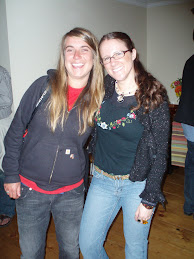Good media relationships, understanding the concept of what is newsworthy, long term media campaign planning, and synchronizing publicity efforts between print, broadcast, an online outlets are what I consider to be the four most important factors in a successful public relations campaign. If one of those four are not working, than the other three really will not be able to make up for it. Hence what I try to tell clients and prospective clients - public relations is NOT a quick fix or a magic wand.
But there is a major backbone to public relations that if not in proper alignment can significantly hinder a public relations campaign - even if all four of these components are in place. That is accurate, working media lists. There are a few ways to keep media lists and anyone handling any part of public relations work probably does one of these three things:
1.) Keep an ongoing contact list of your media contacts.
2.) Search on the internet for email addresses and contact names and information for the media outlets you want to target.
3.) Subscribe to a media database - the three most well known being Cision (used to be Bacons), BurrellesLuce, or Vocus.
And, here are the pros and cons for each one:
1.) Media Contact List
PROS: Exceptional idea because the best editorial you will get comes from those people who know and like you as a person, so keep this updated and send individualized notes or "pitches" when appropriate to these folks.
CONS: If you rely only on this, you are missing out on a world of other media outlets who may be interested in different news stories - don't underestimate the power of the vast markets there are out there that are interested in many different elements of the news you are trying to publicize.
2.) Internet Searching
PROS: Web centric, remember? This is great because it allows you to find niche publications, outlets, websites, blogs, etc. that you won't find anywhere else. It helps globalize your news. And, news outlets often change emails because of the high spam volume they get (which is why you shouldn't bug news people unless you have something newsworthy) and usually update their website first - either with a new address or the form, which is becoming increasingly more popular.
CONS: As someone pointed out on my Web Centric post - not everyone is online! Not all publications are online and not all people are online, so relying on this way to get media contacts will only cover partial markets and media outlets.
3.) Media Databases
PROS: Media databases list just about every media outlet that exists - you'd be amazed how many niche publications and trade journals there are out there. And this is exactly why media databases are great - they allow you to find, rather quickly, all of the media outlets that fit your demographic, market, and region. This is especially important with any regional or national publicity you are trying to garner.
CONS: They are super expensive and while they have a contact management system, they do not always list the contacts you may have made or the most appropriate person all the time to contact. They are also a bit lacking on the web side of the equation.
So, what to do? All three of course! You must do a little of each, making the field of public relations so much more about organization than it has ever been. This is part of the reason I love public relations in my new role as running my own business. While I love being a professional storyteller here in Vermont, I am also uber organized, so it all works out well! And coordinating all three components of media lists is quite the organizational task! If it's too much - feel free to hire me as a consultant- even if it's just to help you coordinate and organize the process and you are the actual media contact - I do it all! My company is RachelCarterPR, my website is www.rachelcarterpr.com, and I subscribe to Cision (an an FYI).
Happy Media Listing!
Friday, October 5, 2007
Subscribe to:
Post Comments (Atom)
















 My StumbleUpon Page
My StumbleUpon Page



1 comment:
Hi Rachel, good tips!
Post a Comment